Dealing with a car accident is stressful enough, without the added worry of vehicle repairs. If you’re wondering, how long does car repair take after an accident?, you’re not alone. The timeframe can feel unpredictable, disrupting your daily life and leaving you without your vehicle. Knowing what to expect can significantly ease this burden.
For over two decades, Car Repair Online has been committed to providing clear and reliable information to car owners navigating the often-complex world of auto repair. We understand that after an accident, getting your car back on the road quickly and safely is a top priority. That’s why we’ve created this comprehensive guide to demystify the collision repair timeline.
In this article, we will explore the typical car repair durations, breaking down the average times for different types of damage. We’ll also walk you through the step-by-step collision repair process, and identify the key factors that can influence how long you’ll be without your vehicle. Our goal is to equip you with the knowledge to navigate the repair process with confidence and realistic expectations.
Average Car Repair Time After a Collision
If you’re asking yourself, “How long will my car be in the shop?”, the most honest answer is: it depends. The time it takes to repair your car after an accident varies widely based on the extent of the damage and other contributing elements. Generally, car repair time after an accident can range from just a few hours for minor fixes to several weeks, or even longer for extensive damage.
To give you a clearer picture of typical repair durations, we’ve compiled a table outlining average repair times based on the severity and type of collision damage:
| Type of Collision Repair | Average Time to Fix |
|---|---|
| Minor Collision Repair | 1-3 days |
| Major Collision Repair | 1 to 3 weeks |
| Paintless Dent Repair | 1-2 days |
| Bumper Repair/Replacement | 1-3 days |
| Fender Repair/Replacement | 1-4 days |
| Door Repair/Replacement | 2-4 days |
| Glass Replacement | 1-2 days |
| Suspension Repair | 2-3 days |
| Frame Straightening | 4 days – 2 weeks |
| Minor Paint Repair | 2-4 days |
| Major Paint Repair | 1-2 weeks |
| Airbag Replacement | 2-5 days |
| Engine Repair/Replacement | 1-4 weeks |
| Full Vehicle Restoration | 4-8 weeks or longer |
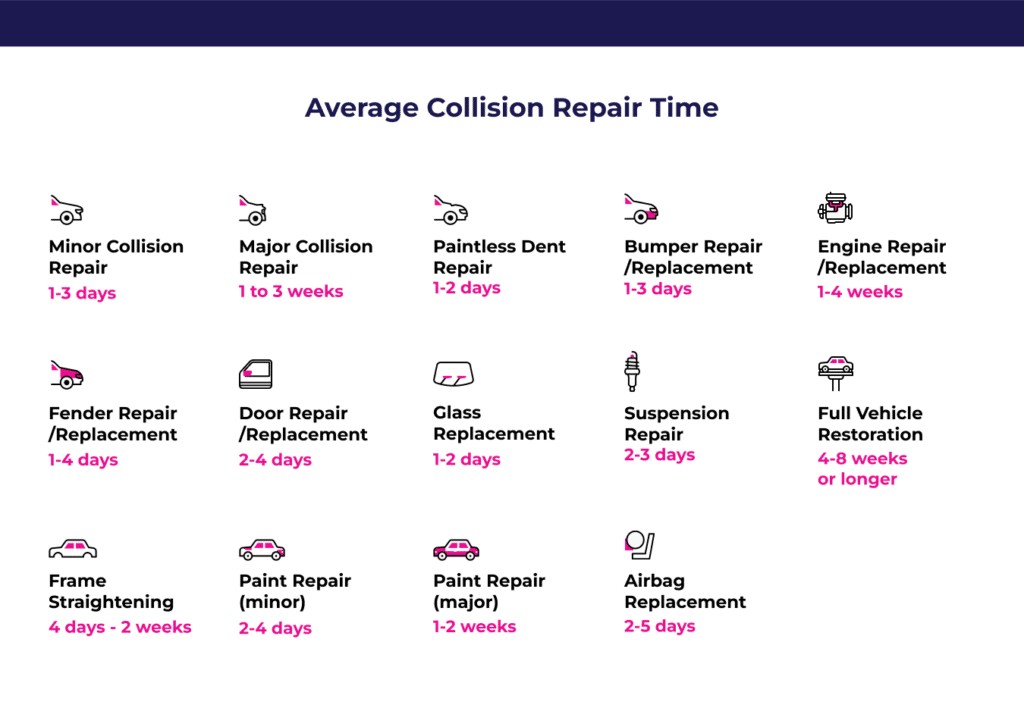
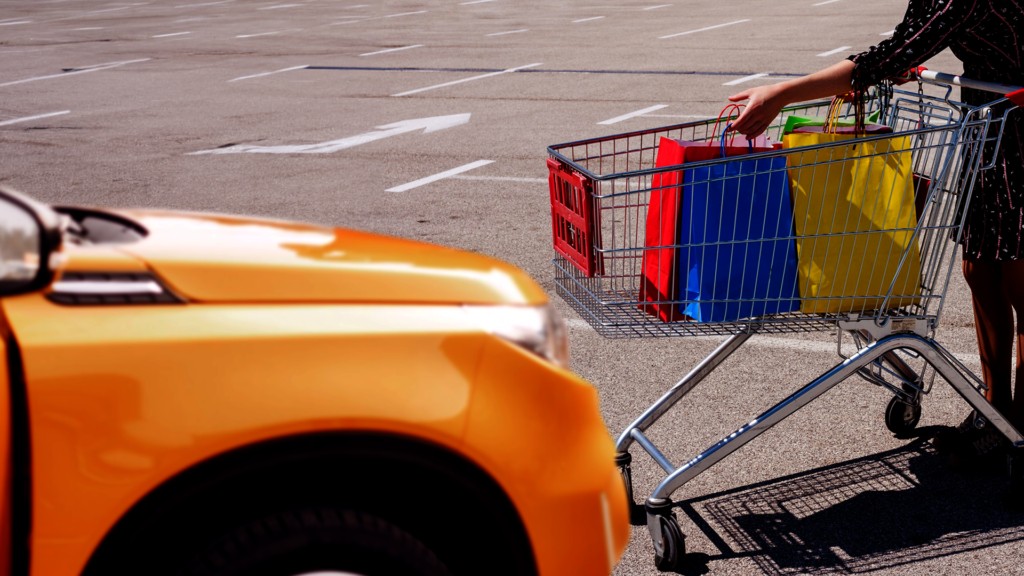
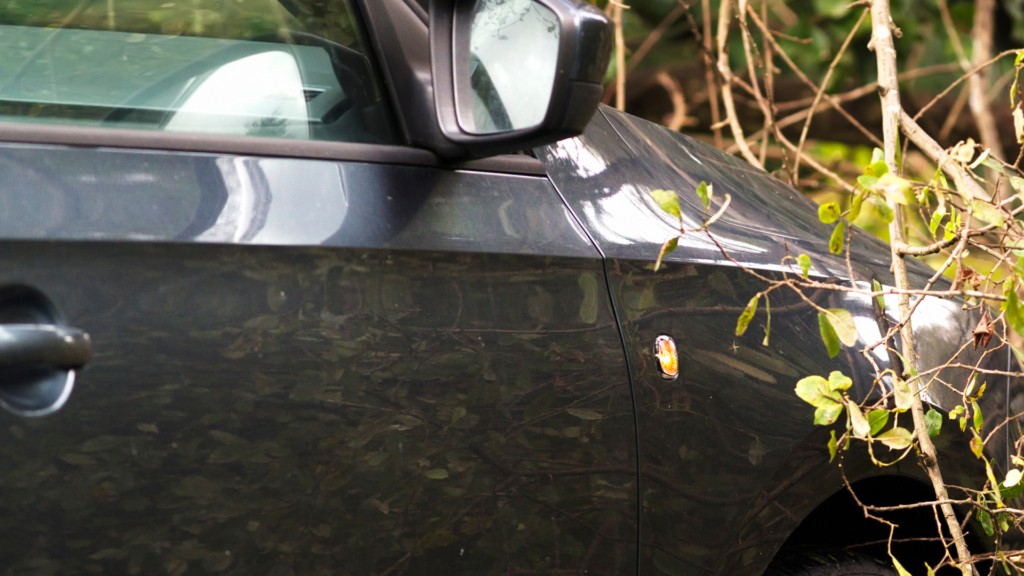
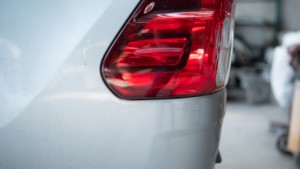
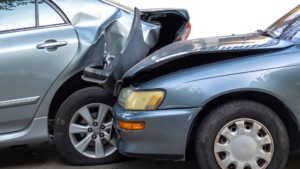
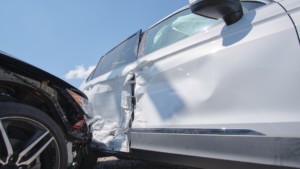
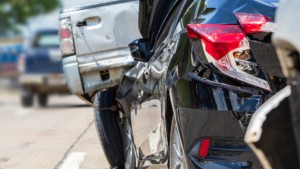
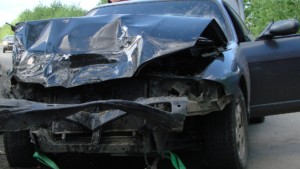

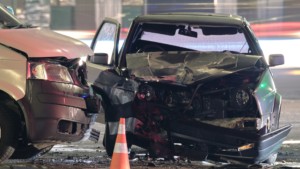
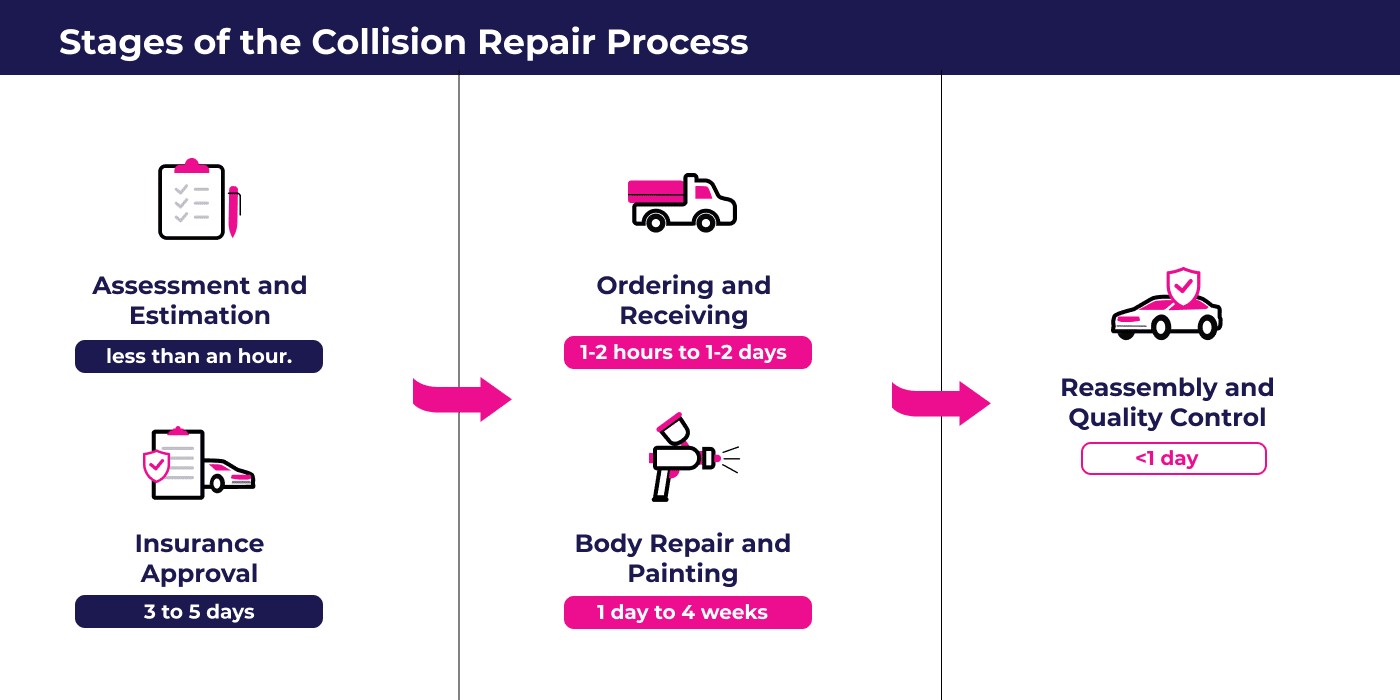

Minor vs. Major Collision Repair Durations
The distinction between minor and major collision repair is crucial in understanding potential repair timelines.
Minor Collision Repair
Minor collision repairs are typically completed within 1 to 3 days. These repairs address superficial damage that doesn’t impact the vehicle’s structural integrity. Examples include small dents, scratches, and minor bumper scrapes.
These types of repairs are faster because they are primarily cosmetic. They often involve straightforward procedures like dent removal, scratch buffing, or minor part replacement. The labor is less intensive, and with readily available parts, the actual repair work can often be finished within a few hours.
Examples of Minor Collision Damage:
- Shopping Cart Dents: Dents caused by runaway shopping carts are a common minor repair.
- Tree Branch Scratches: Driving near trees can sometimes result in scratches from branches brushing against the car’s paint.
- Road Debris Scratches and Chips: Small stones and debris on the road can cause minor paint chips and scratches, particularly on bumpers and hoods.
Major Collision Repair
Major collision repairs typically extend from 1 to 3 weeks, and sometimes longer. These repairs involve more significant damage affecting the vehicle’s structure, mechanics, or safety systems. Examples include frame damage, suspension issues, major body panel damage, and airbag deployment.
Major repairs require specialized equipment, skilled technicians, and potentially longer wait times for parts. Frame straightening, for instance, is a complex process that requires precise measurements and adjustments. Similarly, replacing airbags involves intricate work to ensure the new system is correctly installed and functional.
Examples of Major Collision Damage:
- Rear-End Collisions: These accidents can cause significant damage to the trunk, bumper, and rear structural components of a vehicle.
- Side-Impact (T-Bone) Collisions: Impacts to the side of a vehicle can damage doors, side panels, and potentially the underlying frame structure.
- Collisions with Fixed Objects: Accidents involving poles or barriers can lead to front-end damage, affecting bumpers, fenders, and potentially the vehicle’s frame.
Severe Collision Damage
In cases of severe collision damage, repair times can exceed 3 weeks. This category includes situations with extensive frame damage, significant mechanical issues, or when rare or hard-to-obtain parts are needed. The more extensive the damage, the longer the repair process will inevitably be.
Severe damage often requires a complete overhaul of certain vehicle systems, demanding more time for assessment, parts procurement, and meticulous repair work.
Examples of Severe Collision Damage:
- High-Speed Head-On Collisions: These are among the most damaging types of accidents, often resulting in extensive front-end destruction, engine damage, and frame compromise.
- Rollover Accidents: Vehicles that roll over can sustain damage to multiple panels, the roof, and potentially the undercarriage and frame.
- Severe High-Speed Side-Impact Collisions: High-speed side impacts can cause catastrophic damage to the side of the vehicle, potentially crushing doors, side panels, and critically damaging the frame.
Understanding the Stages of the Collision Repair Process
To better grasp the overall timeframe for car repairs after an accident, it’s helpful to understand the typical stages involved in the collision repair process. From the initial assessment to the final quality check, each step contributes to the total repair duration.
1. Assessment and Estimation
The first step in any collision repair service is a thorough assessment of the damage and the creation of a repair estimate. A qualified technician will inspect your vehicle, document all damage, and determine the necessary repairs. This involves:
- Damage Inspection: Carefully examining the exterior and interior of the vehicle to identify all collision-related damage.
- Parts Identification: Determining which parts need to be repaired or replaced.
- Labor Calculation: Estimating the labor hours required for each repair task.
- Estimate Preparation: Compiling all findings into a detailed repair estimate for your review and insurance approval if applicable.
Typical Timeframe: While some shops may take a day or more to provide a comprehensive estimate, Car Repair Online aims to offer efficient service, often providing free estimates within a shorter timeframe.
2. Insurance Approval
If you’re filing an insurance claim for your collision repairs, the insurance company will need to review and approve the repair estimate. This process involves:
- Estimate Submission: The repair shop submits the estimate to your insurance company.
- Review and Appraisal: An insurance adjuster reviews the estimate, assesses the damage, and verifies the repair costs. They may conduct their own inspection of the vehicle.
- Negotiation (If Necessary): In some cases, the insurance company may negotiate certain repair procedures or costs with the repair shop.
- Approval and Authorization: Once the insurance company is satisfied with the estimate, they will approve the repairs and authorize the shop to proceed.
Typical Timeframe: Insurance approval can take 3 to 5 business days or longer, depending on the insurance company’s processes, the complexity of the claim, and any negotiations required.
3. Parts Ordering and Procurement
Depending on the damage and the make and model of your vehicle, the repair shop may need to order replacement parts. This stage involves:
- Parts Ordering: The shop orders the necessary parts from manufacturers, suppliers, or dealerships.
- Parts Delivery: Parts are shipped to the repair facility.
- Potential Delays: Availability of parts can vary, and backorders or shipping delays can sometimes occur, particularly for less common vehicles or specific parts.
Typical Timeframe: Parts ordering can range from a few hours to 1-2 days, but in some cases, especially for rare or backordered parts, it can take longer.
4. Body Repair and Painting
This is the core of the collision repair process, where the actual physical repairs are performed. It includes:
- Disassembly: Removing damaged parts and components to access repair areas.
- Structural Repairs: Addressing frame damage, if any, using specialized equipment to straighten and realign the vehicle’s frame to factory specifications.
- Bodywork: Repairing dents, replacing panels, and restoring the vehicle’s body shape.
- Painting: Preparing surfaces for painting, matching the original vehicle color, and applying new paint in a controlled environment to ensure a seamless finish.
- Curing and Refinishing: Allowing paint to cure and applying clear coat and other refinishing processes for durability and shine.
Typical Timeframe: Body repair and painting can take 1 day to 4 weeks, depending heavily on the severity and complexity of the damage.
5. Reassembly and Quality Control
The final stages of the repair process focus on putting the vehicle back together and ensuring everything is in proper working order:
- Reassembly: Reinstalling all repaired or replaced parts, trim pieces, and moldings.
- Mechanical Checks: Inspecting and testing vehicle systems, such as brakes, lights, and sensors, to ensure safety and functionality.
- Wheel Alignment: Performing wheel alignment to ensure proper handling and tire wear, especially if suspension components were affected.
- Cleaning and Detailing: Washing and detailing the vehicle, both inside and out, to return it to the customer in excellent condition.
- Quality Inspection: A final inspection to verify that all repairs have been completed to a high standard and that the vehicle meets safety and quality requirements.
Typical Timeframe: Reassembly and quality control typically take 1 to 2 days to ensure thoroughness and attention to detail.
Additional Factors to Consider
Beyond these standard stages, it’s important to be aware of potential unforeseen issues that can extend the repair timeline. These include:
- Discovery of Hidden Damage: During the repair process, technicians may uncover hidden damage that was not apparent during the initial assessment, requiring additional repairs and time.
- Specialized Repairs: Some vehicles may require specialized repairs, such as advanced electronics recalibration or unique structural repairs, which may necessitate specialized technicians or equipment and extend the repair time.
- Supply Chain Issues: Global supply chain disruptions can sometimes impact the availability of certain parts, leading to delays in repairs.
- Shop Workload: The overall workload of the repair shop can also influence the timeline. Busy shops may have longer lead times and potentially longer repair durations.
Factors That Affect Car Repair Time After an Accident
Several key factors directly influence how long car repair takes after an accident. Understanding these factors can help you anticipate a more realistic timeline for getting your vehicle back.
1. Severity of Damage
As discussed earlier, the extent of the damage is the most significant factor determining repair time. Minor cosmetic damage will naturally take less time than major structural repairs or extensive component replacements. The more complex and widespread the damage, the longer the repair process will be.
- Minor Damage: Scratches, dents, minor bumper damage – 1-3 days
- Moderate Damage: Panel replacement, suspension work – 1-2 weeks
- Severe Damage: Frame damage, engine work, extensive bodywork – 2+ weeks
2. Availability of Replacement Parts
The availability of necessary replacement parts can significantly impact the repair timeline.
- Common Parts: Parts for popular vehicle models are generally readily available, minimizing delays.
- Rare or Specialized Parts: Parts for luxury, rare, or older vehicles, or specific components like sensors or modules, may be harder to source, leading to longer wait times.
- OEM vs. Aftermarket Parts: Choosing Original Equipment Manufacturer (OEM) parts may sometimes lead to delays if they are backordered, while aftermarket parts might be more readily available but could vary in quality.
3. Type of Vehicle
The make and model of your vehicle also play a role in repair time.
- Common Vehicles: Repairs for common brands like Toyota, Honda, Ford, and Chevrolet tend to be quicker due to readily available parts and widespread repair expertise.
- Luxury or Rare Vehicles: Luxury brands like Mercedes-Benz, BMW, Audi, and high-end vehicles like Tesla often require specialized parts, trained technicians, and specific repair procedures, potentially extending repair times.
- Newer Vehicles: Newer vehicles, regardless of brand, may sometimes benefit from better parts availability and warranty coverage, potentially streamlining repairs.
4. Insurance Company Involvement
When an insurance claim is involved, the insurance approval process adds to the overall repair timeline.
- Claim Processing: Filing a claim, estimate review, and approval can take several days.
- Adjuster Inspections: Insurance adjusters may need to inspect the vehicle, which can schedule-dependent.
- Negotiations: Disagreements or negotiations between the shop and insurer regarding repair scope or costs can further extend the process.
5. Repair Shop Workload
The current workload of the chosen auto repair shop can also influence how quickly your car gets repaired.
- Shop Backlog: Busy shops may have a backlog of vehicles awaiting repair, which can push out your vehicle’s repair start date and potentially extend the overall duration.
- Technician Availability: The availability of qualified technicians can also be a factor. Specialized repairs may require technicians with specific skills, and their availability can impact scheduling.
Conclusion
So, how long does car repair take after an accident? As we’ve seen, the answer is multifaceted and depends on a range of variables. From minor fender benders to major collisions, repair times can fluctuate significantly. Understanding the different types of damage, the stages of the repair process, and the factors that can influence the timeline is crucial for setting realistic expectations.
While waiting for car repairs can be inconvenient, choosing a reputable and experienced auto repair service is paramount. A quality shop will communicate transparently with you throughout the process, provide regular updates, and strive to complete your repairs efficiently and to the highest standards. Patience is often necessary, but with the right repair professionals, you can ensure your vehicle is restored to its pre-accident condition and you’re back on the road safely.
Average Collision Repair Time FAQs
What are my transportation options while my car is in the shop?
Being without your car can be challenging. Fortunately, there are often transportation solutions available while your vehicle is undergoing collision repair.
- Rental Car Coverage: Check your auto insurance policy. Many policies include rental car coverage that will pay for a rental vehicle while your car is being repaired, especially if the accident was not your fault.
- Repair Shop Assistance: Some repair shops offer assistance with transportation, such as loaner vehicles or shuttle services. Car Repair Online, for instance, may offer loaner cars or assistance with local transportation depending on the repair and customer needs.
- Public Transportation or Ridesharing: Consider using public transportation, taxis, or ridesharing services like Uber or Lyft as temporary alternatives.
Do auto body shops offer warranties on their repair work?
Yes, most reputable auto body shops stand behind their work and offer warranties on collision repairs. These warranties typically cover the quality of workmanship and materials used in the repair.
- Warranty Coverage: Warranties can vary in length and what they cover, but they often include aspects like paint finish, bodywork integrity, and the proper installation of replacement parts.
- Car Repair Online Warranty: Car Repair Online is committed to quality and offers a lifetime warranty on auto body work and accident repair services, providing peace of mind to customers.
Is front-end collision repair typically longer than rear-end repair?
In many cases, yes, front-end collision repairs can take longer and sometimes be more expensive than rear-end repairs. This is often due to the complexity of the front of a vehicle.
- Front-End Complexity: The front of a car houses critical components like the engine, radiator, headlights, grille, hood, and sometimes complex safety sensors. Damage to the front can impact many of these systems, requiring more extensive and time-consuming repairs.
- Rear-End Simplicity (Relatively): The rear of a vehicle is generally less complex structurally and mechanically, making rear-end repairs often more straightforward, faster, and potentially less costly, assuming frame damage is not involved in either scenario.
When is a car considered a total loss after an accident?
A car is typically considered a total loss, or “totaled,” when the cost to repair the damage exceeds a certain percentage of the vehicle’s pre-accident value.
- Total Loss Threshold: Insurance companies usually declare a vehicle a total loss when repair costs reach approximately 70-75% of the car’s market value. This percentage can vary slightly by insurer and state regulations.
- Economic Total Loss: Even if a car is repairable, if the repair costs are close to or exceed the car’s value, it’s often deemed an “economic total loss” because it’s financially impractical to repair it.
- Insurance Payout: In a total loss situation, the insurance company will typically pay you the actual cash value of your vehicle before the accident, minus your deductible. You then retain the option to keep the totaled vehicle for salvage value or relinquish it to the insurance company.
What should I do if my car repair is taking much longer than initially estimated?
If your car repair is significantly exceeding the initial estimate, proactive communication is key.
- Contact the Repair Shop: First, reach out to the auto body shop directly. Politely inquire about the reason for the delay. There may be legitimate reasons, such as unexpected hidden damage, parts delays, or insurance claim complications.
- Seek Clarification: Ask for a detailed explanation of the delay and a revised estimated completion date. Request regular updates to stay informed about the progress.
- Contact Your Insurance Company: If the delay seems unreasonable, or if you are not satisfied with the repair shop’s explanation, contact your insurance company, especially if they are involved in the claim. They can investigate the delay and potentially intervene to expedite the repairs or explore alternative solutions if necessary.
- Consider Alternatives (Carefully): While it’s generally best to work with the initial repair shop to resolve delays, in extreme cases of prolonged delays and lack of communication, you might consider discussing with your insurer the possibility of moving your vehicle to another reputable shop. However, this should be a last resort, as changing shops mid-repair can sometimes complicate the process further.
